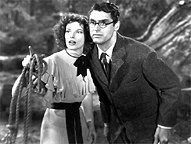
| Home | On-Campus Schedule |
Online Schedule | Summer Schedule |
Assignments | Grades | Conduct | Study Guides |

Use this page as a study guide for the terms we're learning for Introduction to Film.
Appreciating a film vs. liking a film
In media res
Form and Content
5 Principles of Film Form:
Function
Similarity & repetition
Motif
Parallelism
Difference & variation
Development
Unity & Disunity
Ideology
4 Levels of meaning:
Referential
Explicit
Implicit
Symptomatic
Story
Plot
Diegetic
Non-diegetic
Offscreen space
3 Temporal Factors:
Order
Flashback
Flashforward
Frequency
Duration
Ellipsis
Real time
Plot time
Story time
Screen time
Narration
Range
Unrestricted/Omniscient
Restricted
Depth
Objective
Subjective
Exposition
In media res
Surrealism / Surreal Dream Logic
Profilmic event
Style
Georges Méliès
German Expressionism
4 aspects of mise-en-scene:
Setting & props
Costume & makeup
Acting & actor blocking
Direct address
Lighting
Quality
High-key lighting
Low-key lighting
Chiaroscuro
Direction
Key lighting
Fill lighting
Source
Available lighting
Three-point lighting
Color of lighting
Filters/Gels
Color in mise-en-scene
Saturated
Frame
Shot
Scene
Sequence
Framing: Composition
Centered vs. Off-Center Framing
Diagonal Framing
Framing: Dimension & Shape
Aspect Ratio
Framing: Camera Placement, Level, & Angle
Canted Level
High angle
Low angle
Framing: Camera Distance / Shot scale
Long shot, medium shot, close-up
Establishing Shot
Two-shot
Mobile Framing
Static/stationary camera
Panning
Tilting
Tracking (or Dollying)
Craning
Reframing
POV shot
Hand-held
Duration
Long
take
Jean Renoir
Photographic Qualities: Perspective Relations
Focal Length of Lens & Focus Depth
Normal lens (Renaissance perspective)
Wide-angle lens
Telephoto lens
Zoom (Optical Movement)
Shallow
focus
Selective focus
Deep
focus
Gregg Toland
Racking
focus
Photographic Qualities: Film Stock
Film speed
Overexpose, underexpose
Filters
Tinting
Photographic Qualities: Speed of Motion
Slow-motion
Fast-motion
Time-lapse
Freeze-frame
Pixillation
Superimposition
Miniatures/models
Composite shot (or "Process shot"/"Process work")
Rear Projection
Matte shot (or "Matte work")
Stationary matte
Traveling matte
Digital composite shot
Blue/Green screen
CGI (Computer Generated Imagery)
Edits
Cut
Dissolve
Fade
Wipe
Iris
Superimposition
Rhythmic & Graphic Relations
Graphic Match/Graphic Contrast
Spatial & Temporal Relations
Ellipsis
Kuleshov Effect
Cross-cutting
D.W. Griffith
Continuity Editing
180-degree rule
Master shot
Cut in
Match-on-action (or "cut on movement")
Cutaway
Empty Frame
Shot/reverse-shot
Eyeline Match
POV Editing
Cheat Cut
Montage Sequence
Continuity Error
Non-diegetic insert
Jump Cut
Elliptical Editing
Akira Kurosawa
Yasujiro Ozu
360-degree space
"Pillow Shot"
Soviet Montage
Lev Kuleshov
Sergei Eisenstein
Dialectic
Dziga Vertov
City Symphony
Kino Eye
Types of sound:
Dialog/speech
Effects/noises
Music
Mood Music
Leitmotif
John Williams
Richard Wagner
Silence
Acoustic Properties:
Loudness
Pitch
Timbre
Recorded Sound:
Direct sound
Reflected sound
Ambient sound
Room tone
Foley Technique
Post-dubbing
Sound Perspective
Natural Sound
Mickey Mousing
Fidelity
Diegetic/Nondiegetic sound
Voiceover
Soundover
Offscreen sound
Internal Diegetic Sound
External Diegetic Sound
Synchronous/Asynchronous sound
Sonic Flashback/Sonic Flashforward
Sound Bridge
Disjunctive Sound
4 Ways of Organizing "Nonfiction" Form:
Rhetorical
Categorical
Abstract
Associational
European Avant-garde
Abstraction
Marcel Duchamp
American Avant-garde
Maya Deren
Stan Brakhage
Yvonne Rainer
"Minimalist melodrama"
Documentary Realism
"Objectivity"
"Docere"
Lumière Brothers
John Grierson
Intertitles
Narrative Documentary
Salvage Ethnography
Interviews
Narration
Cinema Vérité/Direct Cinema
Fred Wiseman
4 Ways of Organizing "Nonfiction" Form:
Rhetorical
Categorical
Abstract
Associational
Leni Riefenstahl
Self-Reflexive
Errol Morris
Documentary Reconstruction
Fictional Documentary Realism
"Telefono bianco" films
Marshall Plan of 1948
"Tradition of Quality" films
Ambiguity
Self-reflexivity
Cinephilia
Intertextuality
Cahiers du cinema
Auteur Theory/Authorship
Delayed Exposition
Episodic
Subjectivity
Objective Realism
Subjective Realism
Filmmaker's Narrational Commentary
Genre Mixing
Subgenres
Narrative Conventions
Iconography
Ideology
Symptomatic Meaning
Subtext
Femme fatale
Production Code
American Ideologies of 1960s-1970s
Cawelti's 4 Modes:
Burlesque/parody
Nostalgia
Demythologization
Reaffirmation of Myths
Contemporary Genre Mixing
Symptomatic Meaning
American Ideologies
Gender/Race/Class/Sexuality/Postcoloniality . . .
Transvestitism
Patriarchy
Laura Mulvey
"Against the Grain"
Marlon Riggs